
Hotel Vista Kumamoto Airport
Eitetsu TerakadoHotel Vista Kumamoto Airport lies halfway between Kumamoto City and Mt. Aso and is an excellent value and base for visiting Kumamoto's top attractions.

The Egao Kenko Stadium, also known as the Kumamoto Stadium, was founded in 1998 and is characterized by its beautiful, wing-shaped roof. The outside of the stadium is surrounded by lush forests. The home stadium of the J-League team Roasso Kumamoto, a Japanese professional football team -Liga, can hold up to 32,000 spectators.
The stadium, inaugurated in March 1998, is the center of the prefecture's sports park, which was laid out in 1978 and includes a tennis facility, an athletics facility, soccer and rugby fields, a swimming pool, an archery range, a softball field, several sports halls and a fitness studio.
Games taking place can be watched very comfortably on seats with backrests and with generous legroom. No matter where you sit, the view of the playing field and the jumbo screen is always ideal. The full color screen is over 7 meters high and 13 meters wide, so you won't miss a second with subsequent photos and instant repetitions.
From Kumamoto Station take the Kyushu Sanko Bus to “Park Dome Kumamoto-mae” bound for Shika No. 8 Menkyo Center. From there it’s a 3-minute walk to the stadium.

Hotel Vista Kumamoto Airport lies halfway between Kumamoto City and Mt. Aso and is an excellent value and base for visiting Kumamoto's top attractions.

Business Ryokan Tamaki is a Japanese inn located in downtown Kumamoto. Enjoy down-to-earth Japanese hospitality and local food in a family-run hotel.
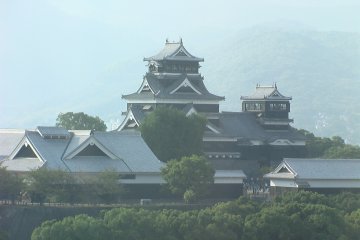
The Presidential Suite room at Hotel Nikko Kumamoto has a great view of Kumamoto Castle.
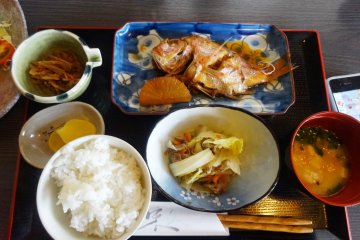
No need for a menu at Hisami in Kumamoto, where the chef and owner extraordinaire turns out a tasty daily lunch menu at bargain prices
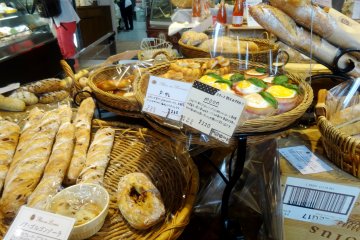
Pain au Levain is arguably one of Kumamoto's best bakeries, tucked out in the eastern part of the city just off the Kyushu expressway.
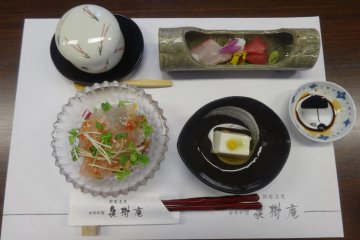
You can find delicious kaiseki cuisine at ridiculously affordable prices in the out-of-the-way restaurant of Senjuan

Suizenji Jojuen is a traditional Japanese landscape garden that was laid out in the late 1600s. Due to its enormous size of 64 hectares, it is often referred to as Suizenji Park. Originally it was planned by Prince Hosokawa Tadatoshi to enjoy tea there in peace Its name comes from a former Buddhist temple there, while the garden now houses a Shinto shrine in which the Hosokawa family is buried. The garden is supposed to represent the 53 stations of the old Tokaido Street, a former trade route that ran between Tokyo and Kyoto. The highlight is the miniature representation of Mount Fuji, as well as a reduced form of the Fushimi Inari Shrine in Kyoto. The tea house there originally comes from the Imperial Palace in Kyoto and is open to the public. The Suizenji Jojuen is located in the city of Kumamoto on the southern main island of Kyushu and, along with the Kumamoto Castle, is one of the city's main attractions.

Kumamon Square is the" "office" "of the famous mascot Kumamon of Kumamoto Prefecture. The bear mascot was created in 2011 to improve public relations in Kumamoto. Kumamon works as an official of the prefecture and is with the dual roles of sales manager and sales manager Happiness Manager for Kumamoto Prefecture. In Kumamon Square there is an exclusive souvenir shop, there are food stalls and an event stage. In the square, visitors have numerous opportunities to take photos and experience Kumamon up close. There are also live shows to which Kumamon dances. Kumamon Square is full of trophies the popular bear received from all over Japan.
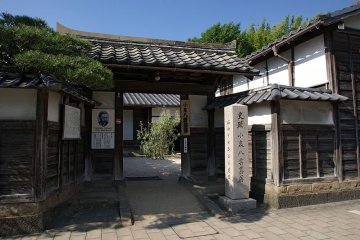
Lafcadio Hearn was born in Greece in 1850 to a father from Ireland and a mother from Greece. He was a British explorer who came to Japan in the 18th century and became a well-known author who introduced aspects of Japanese culture to the western world . In addition to his thirty other publications, Hearn was best known for his short story book "" Kwaidan "". His writings have been praised for their authentic views of Meiji-era Japan, unbiased from its Western origins. He lived in Matsue for about a year of his life and his former residence is now open to the public, along with a museum next door dedicated to his work and person.